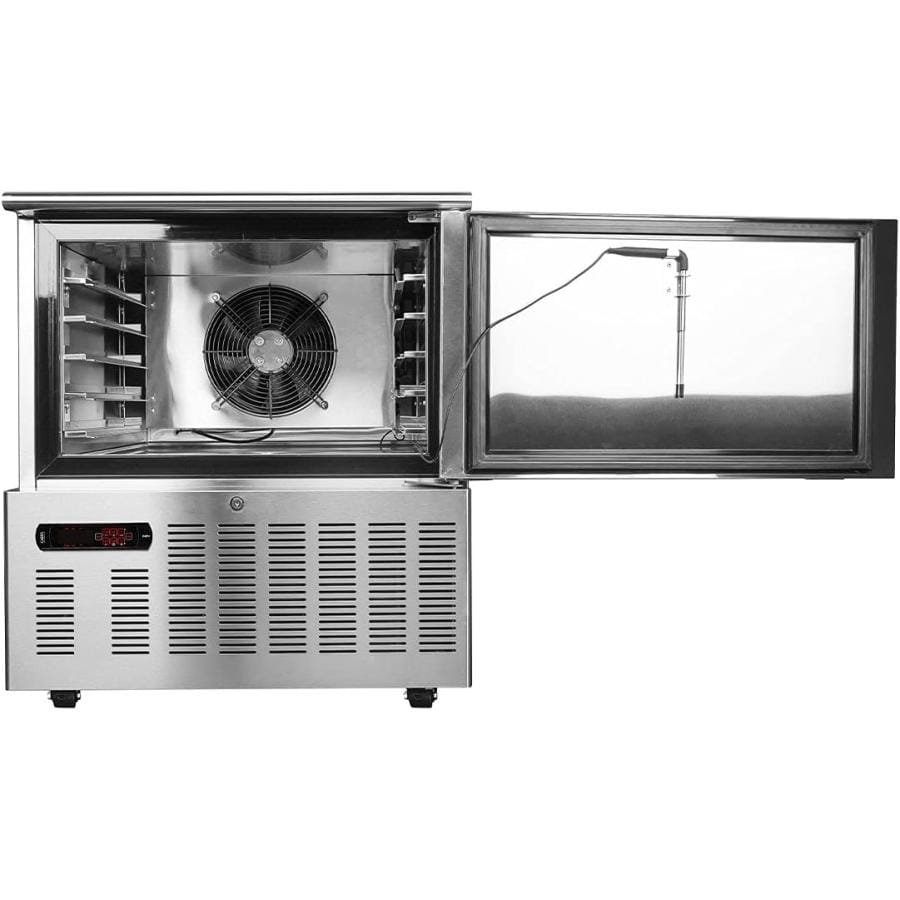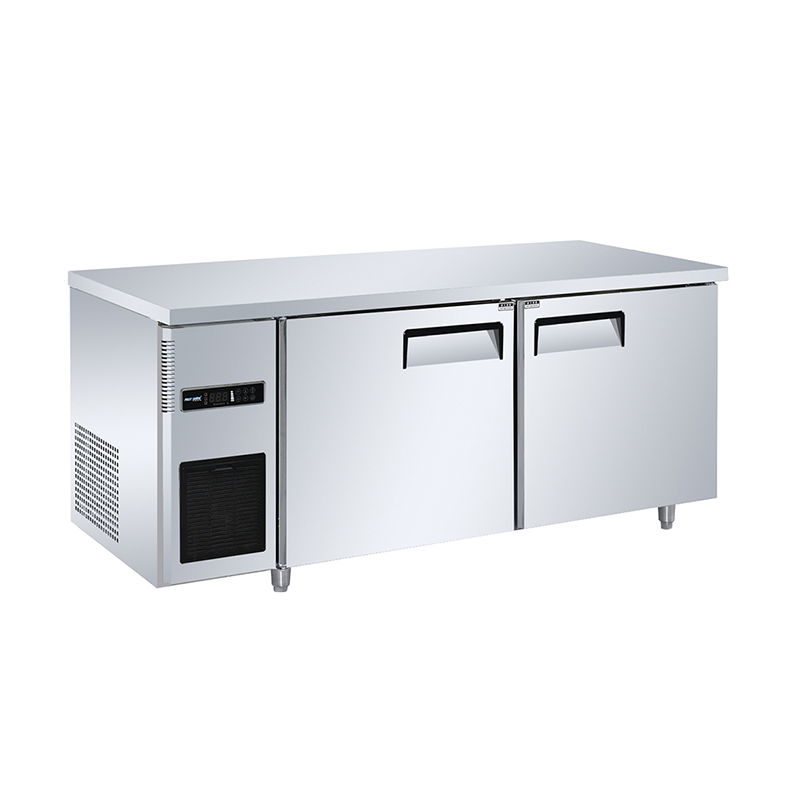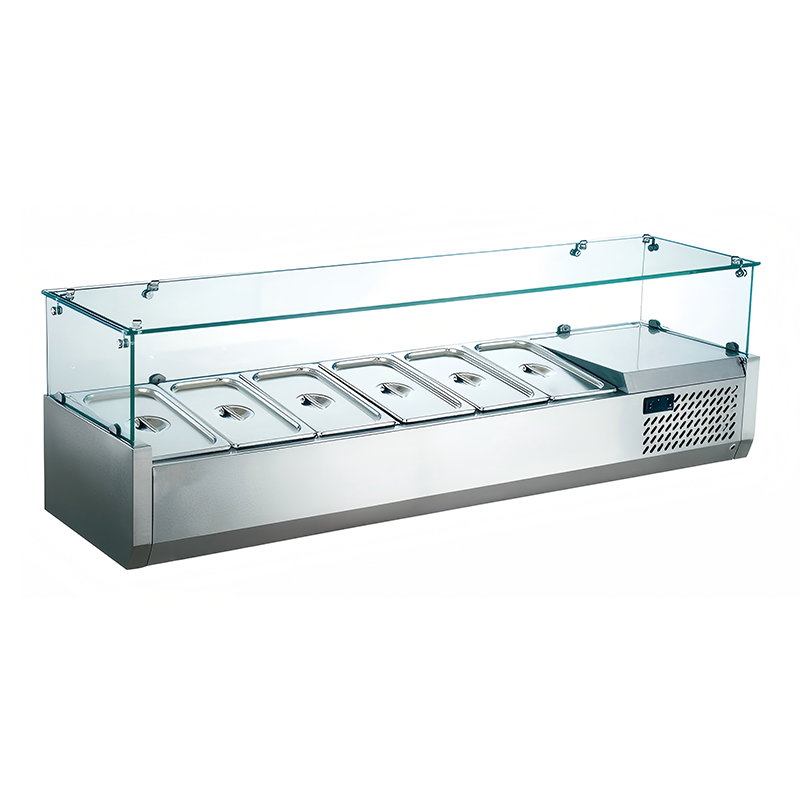| Model | SD3 | SD5 | SD10 | SD15 | SD26 | SD40 |
| Dimension(mm) | 800*830*925 | 800*830*1015 | 800*830*1645 | 800*830*2170 | 880*1250*1900 | 1150*1100*2500 |
| Temp. (℃) | 0~-45℃ | 0~-45℃ | 0~-45℃ | 0~-45℃ | 0~-45℃ | 0~-45℃ |
| Volume(L) | / | / | / | / | / | / |
| Cooling Type | Air Cooling | Air Cooling | Air Cooling | Air Cooling | Air Cooling | Air Cooling |
| Platest(n) | 3 400*600 | 5 400*600 | 10 400*600 | 15 400*600 | 26 400*600 | 40 400*600 |
| Trayus Pitch | 70mm | 70mm | 70mm | 70mm | 70mm | 70mm |
| Watts(W) | 805 | 906 | 1486 | 2200 | 3000 | 4600 |
| Voltage/Vrequency | 220V/50Hz | 220V/50Hz | 220V/50Hz | 380V/50Hz | 380V/50Hz | 380V/50Hz |
5-Tray Rapid Blast Freezer Thanks to the Blast Chilling/Freezer cycle, the product temperature drops from the after-cooking temperature of +90°C down to only +3°C in as little as 90 minutes and +90°C down to -18°C in 240 minutes. Importantly, the transition between +65°C and +10°C (the ideal climate for the proliferation of bacteria) is so fast that any bacterial generation can be prevented.
A traditional slow-freezing process transforms the liquids in foods into macro-crystals of ice. This development will irreparably damage most foods and can lead to bacterial development.
To preserve the food for a medium/long period and to maintain its nutritional value, it is recommended to freeze products to a core temperature of -18°C in the least time possible.
Once thawed, products frozen in a blast chiller will not lose fluids or flavour and will retain their consistency better than traditional slow-freezing methods.







